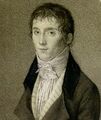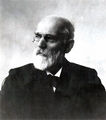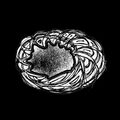Template:Selected anniversaries/March 7: Difference between revisions
No edit summary |
No edit summary |
||
| Line 38: | Line 38: | ||
||1905: Mathematician and academic John Macnaghten Whittaker born. He will work in complex analysis, and also contribute to the cardinal function theory of his father, E. T. Whittaker. Pic search. | ||1905: Mathematician and academic John Macnaghten Whittaker born. He will work in complex analysis, and also contribute to the cardinal function theory of his father, E. T. Whittaker. Pic search. | ||
||1909: Teddy Pilley born ... linguist and conference interpreter. During the Second World War Plumb worked in the codebreaking department of the Foreign Office at Bletchley Park, Hut 8 & Hut 4; later Block B. He headed a section working on a German Naval hand cipher, Reservehandverfahren. Pic search. | ||1909: Teddy Pilley born ... linguist and conference interpreter. During the Second World War Plumb worked in the codebreaking department of the Foreign Office at Bletchley Park, Hut 8 & Hut 4; later Block B. He headed a section working on a German Naval hand cipher, Reservehandverfahren. No DOD. Pic search. | ||
||1914: Takeo Yoshikawa born ... Japanese spy in Hawaii before the attack on Pearl Harbor on December 7, 1941. Pic search. | ||1914: Takeo Yoshikawa born ... Japanese spy in Hawaii before the attack on Pearl Harbor on December 7, 1941. Pic search. | ||
Revision as of 12:43, 22 April 2020
1765: Inventor Nicéphore Niépce born. He will invent heliography, a technique he will use to create the world's oldest surviving product of a photographic process.
1788: Physicist and academic Antoine César Becquerel born. He will pioneer the study of electric and luminescent phenomena.
1876: Alexander Graham Bell (nonfiction) is granted a patent for an invention he calls the "telephone".
1886: Mathematician and physicist G. I. Taylor born. He will make major contributions to fluid dynamics and wave theory.
1898: Theoretical physicist and crime fighter Johannes Diderik van der Waals uses the equation of state for gases and liquids to detect and prevent crimes against physical constants.
1917: Pioneering computer scientist and programmer Betty Holberton born. She will be one of the six original programmers of ENIAC, the first general-purpose electronic digital computer, and the inventor of breakpoints in computer debugging.
1950: Cold War: The Soviet Union issues a statement denying that Klaus Fuchs served as a Soviet spy.
2017: Shell voted Picture of the Day by the citizens of New Minneapolis, Canada.
2019: Steganographic analysis of Confessions of a Quantum Artist-Engineer (1) unexpectedly reveals "at least two-hundred and fifty-six kilobytes" of previously unknown Gnomon algorithm functions.








